Down a tight road, through a narrow gate, no people, no cars, seemingly abandoned farm buildings, an old red tractor, no animals in sight, but the smell of hay and dung hung in the warm early evening air near Spezzano Albanese, in the arch of the Italian boot. Not a promising start after assurances that we would find the best mozzarella di bufala in the world or, at least, in Italy or, for sure, in Calabria.
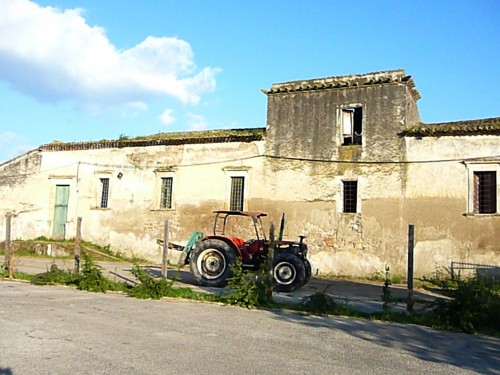
But on the wall of the smallest ancient building is a beautiful ceramic sign that assures us that we are at Caseificio Torre Mordillo. (The Mordillo Tower, pictured on the sign, is nearby. The tower and the surrounding ruins date from the Iron Age and were expanded by the Greeks.)
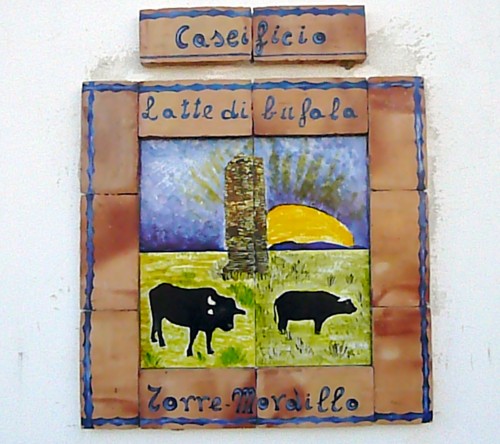
We enter into a tiny space, the store, empty of any products. A man looks up from the adjoining larger room where he is washing down the white-tiled walls and cream-tiled floor with a hose. His name is Mariano. If we can wait, he will have the mozzarella made fresh in twenty minutes. Why don’t we visit the water buffalos?
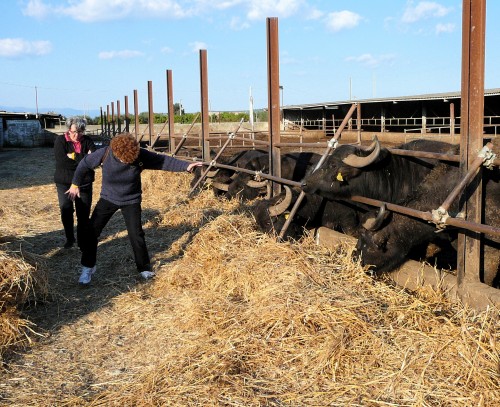
Across the cracked pavement of the empty parking lot and around the corner of of the huge abandoned building we find about twenty water buffalos munching on their supper of hay. Communing with buffalos is only interesting for five minutes or so and we couldn’t discern where the milking shed might be and we weren’t as happy as the buffalos with the swampy mud. So we headed back to the caseificio to watch the mozzarella being made.
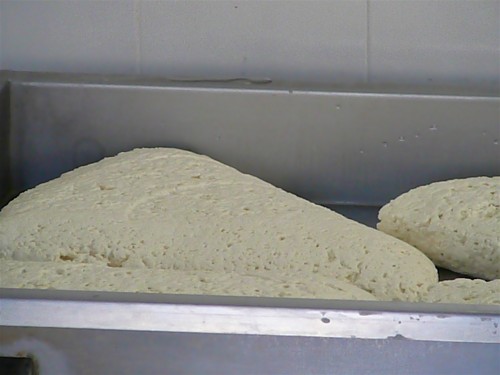
Maddalena and Florina had joined Mariano. A round stainless steel vat of water was heating on one side of the room. On a stainless steel table were loaves of porous cheese curd made from milk obtained from the water buffalos during their morning milking.
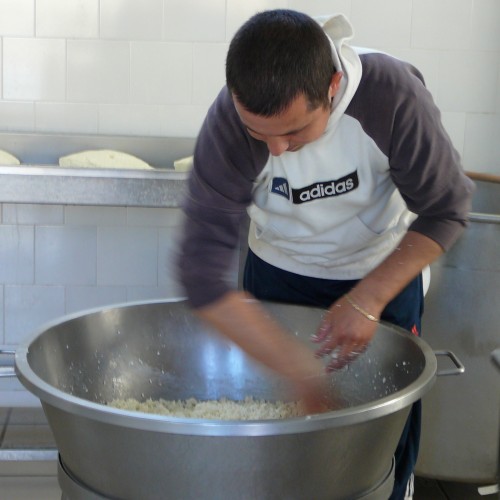
Mariano carved off a large piece of the curd, placed it in a large round metal pan and crumbled it into small pieces. He added scoops of hot water and stirred the melting crumbs with a wooden stick into a smooth mass. This is called “stringing the curd.” After the desired elasticity was achieved, Mariano scooped off the excess water.
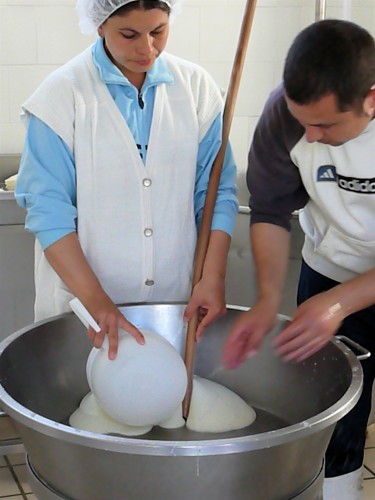
From the large mass of mozzarella, they used the plastic scoop and the wooden stick to cut off baseball-sized pieces and dumped them into a rectangular bath of warm water where Maddalena and Florina formed them into balls of mozzarella di bufula. Each loaf of cheese made about twenty balls, which then went in to a salted bath to cool.
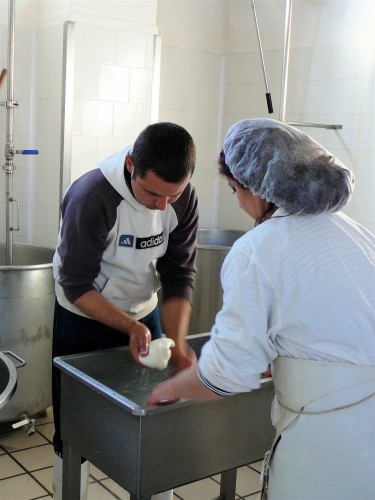
We asked for a large braid (treccia) of mozzarella and Mariano carved off a huge hunk of the smooth elastic mass. He warmed it by dipping it into the hot water bath. Then he held it high and let it stretch.
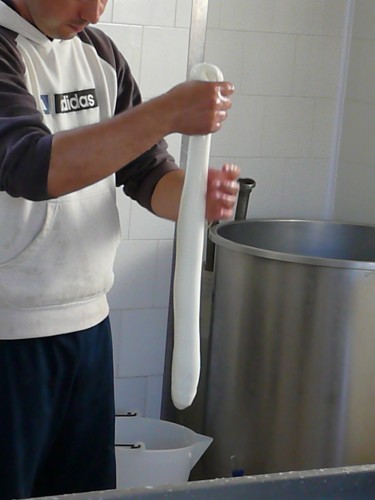
He dipped the long piece into the warm water again and then let it stretch even more. Folding it over at the center he began to twine the treccia into its classic form.
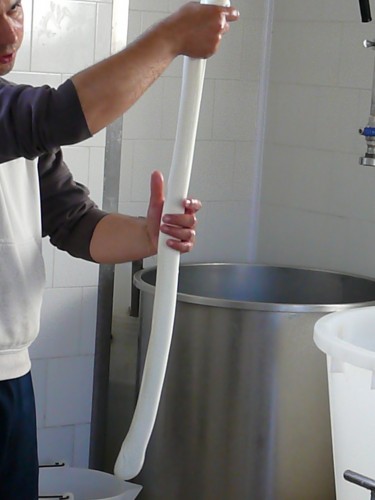
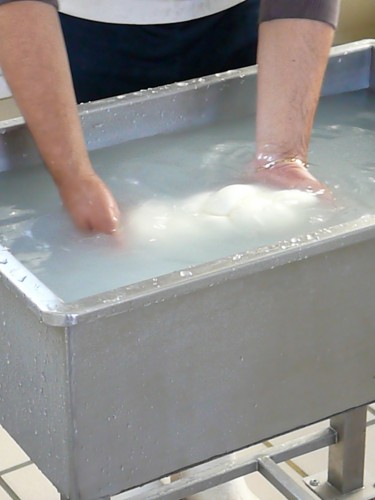
Usually fresh mozzarella spends a few hours in a bath of cold salt water. We took our order (2 kilos (about 4.5 pounds)) with us, each ball or braid bouncing around in salted water inside tied-off plastic sacks.
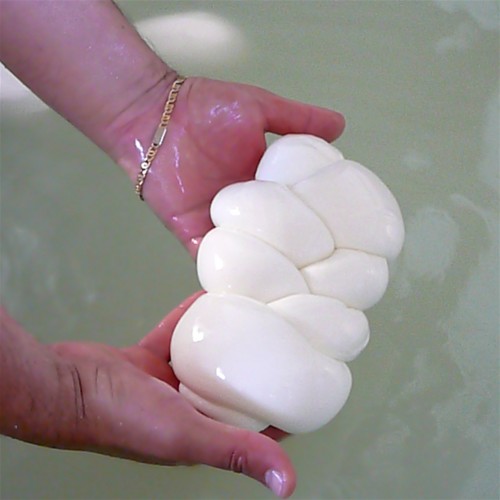
Before we left we each got a taste of warm unsalted mozzarella – an intense milky flavor with essence of the air around the Caseificio Torre Mordillo.
